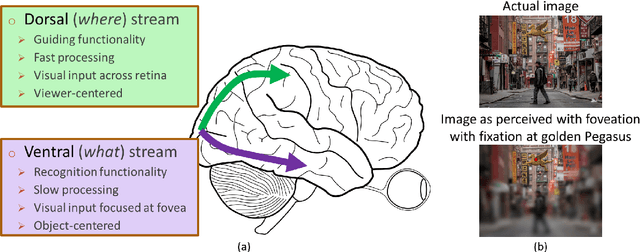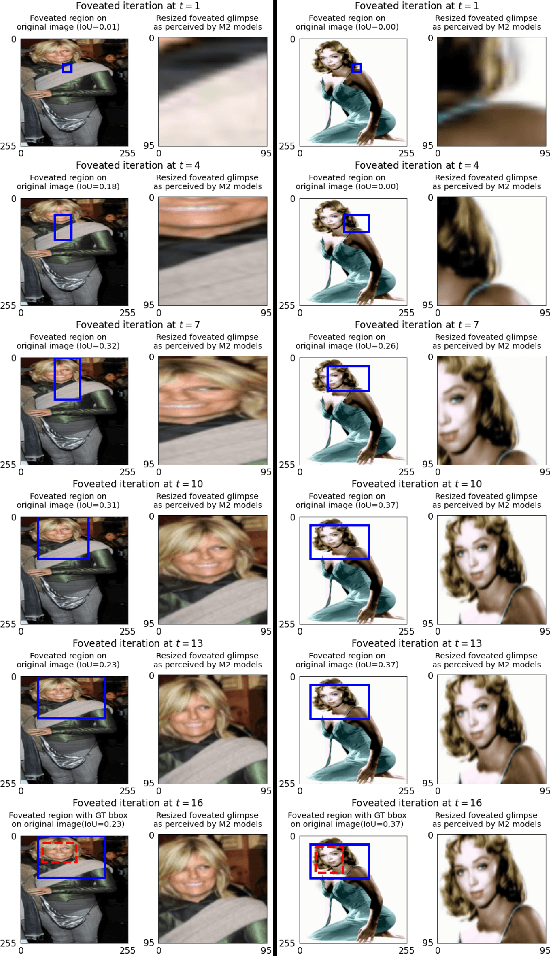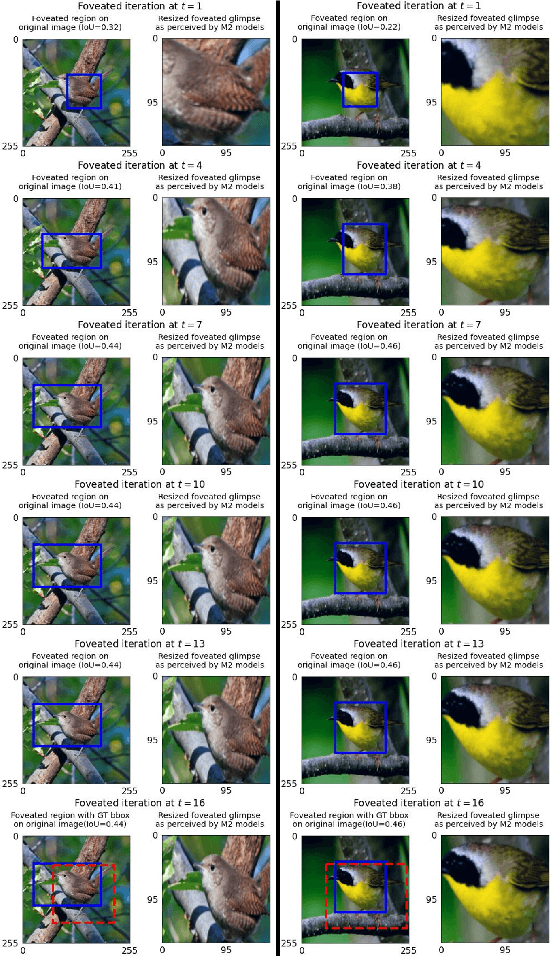Towards Two-Stream Foveation-based Active Vision Learning
Paper and Code
Mar 24, 2024



Deep neural network (DNN) based machine perception frameworks process the entire input in a one-shot manner to provide answers to both "what object is being observed" and "where it is located". In contrast, the "two-stream hypothesis" from neuroscience explains the neural processing in the human visual cortex as an active vision system that utilizes two separate regions of the brain to answer the what and the where questions. In this work, we propose a machine learning framework inspired by the "two-stream hypothesis" and explore the potential benefits that it offers. Specifically, the proposed framework models the following mechanisms: 1) ventral (what) stream focusing on the input regions perceived by the fovea part of an eye (foveation), 2) dorsal (where) stream providing visual guidance, and 3) iterative processing of the two streams to calibrate visual focus and process the sequence of focused image patches. The training of the proposed framework is accomplished by label-based DNN training for the ventral stream model and reinforcement learning for the dorsal stream model. We show that the two-stream foveation-based learning is applicable to the challenging task of weakly-supervised object localization (WSOL), where the training data is limited to the object class or its attributes. The framework is capable of both predicting the properties of an object and successfully localizing it by predicting its bounding box. We also show that, due to the independent nature of the two streams, the dorsal model can be applied on its own to unseen images to localize objects from different datasets.
 Add to Chrome
Add to Chrome Add to Firefox
Add to Firefox Add to Edge
Add to Edge